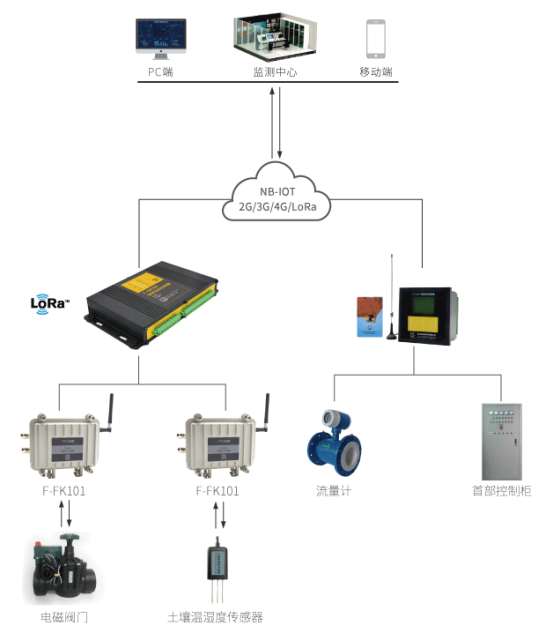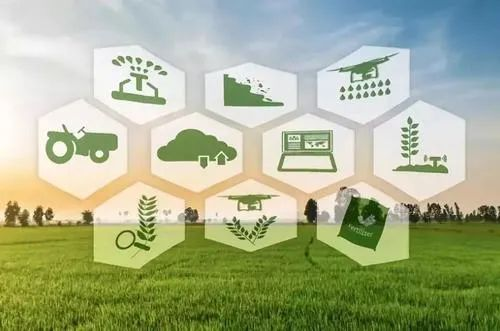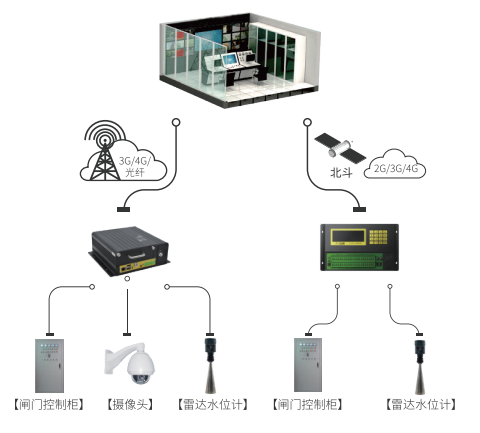






Release time:2025-11-07 Browsed0 order
The existing water-saving irrigation systems have shown obvious effects in reducing crop irrigation costs and increasing crop yields. However,
due to many problems in conventional drip irrigation systems that need to be solved, the rationality of irrigation cannot be effectively implemented.
The main problems are: excessive randomness in manual operation, which cannot strictly implement the irrigation system; empirical irrigation, which
cannot ensure the uniformity of irrigation; all manual operations, which are labor-intensive and cannot liberate labor.

China's agricultural water consumption accounts for about 80% of the total water consumption. Due to the generally low efficiency of agricultural
irrigation, the water utilization rate is only 45%, while that of countries with high water resource utilization has reached 70%-80%. Therefore, solving
the problem of agricultural irrigation water is very important for alleviating water shortage.
The agricultural high-efficiency water-saving automatic irrigation system is composed of a valve control system, soil moisture monitoring system,
water pump control system, PC-side background management system, mobile APP, and monitoring service center. The communication between the
monitoring service center and each monitoring system is realized by the field controller equipment of each system through the 4G network, and
each subsystem completes the monitoring and management control through valve control, sensors, and field controllers.

1. The system is designed in a modular and hierarchical manner to improve efficiency, increase maintainability, and facilitate expansion.
2. Flexible hardware configuration allows users to upgrade and replace controlled hardware devices arbitrarily without replacing software.
3. Friendly human-machine interface realizes unattended irrigation process, reduces personnel's work intensity, and improves irrigation efficiency.
4. Strong anti-electromagnetic interference ability ensures the system can operate reliably in the harsh environment of strong electromagnetic
interference in the field.
5. Fault automatic detection function improves the constructiveness of the system, and the layout of various devices is required to be beautiful.
6. 
The valve monitoring system is composed of valve control, solenoid valve, and controller system. The valve control system is used to realize
the water flow truncation and distribution of the farmland irrigation area operation pipeline network. The system adopts a full wireless roaming
network, and no lines need to be laid in the field. Through zonal management and cascade communication, remote data transmission is realized.
Each solenoid valve has a dedicated name. The solenoid valve is opened according to the scheduled rotation irrigation plan. The monitoring
center issues instructions to the specified solenoid valve or rotation irrigation group to open the solenoid valve for irrigation or close the solenoid
valve to stop irrigation. According to the soil moisture content, the valve controller can be linked to realize automatic irrigation. The soil moisture
threshold is set in the system. When the soil moisture is lower than the set threshold, the solenoid valve is opened for irrigation. When the threshold
is reached, the solenoid valve is closed to stop irrigation. The valve controller is connected to the solenoid valve through a cable, and the valve
controller communicates with the field controller wirelessly (LoRa). The on-off valve command is sent by the field controller to the valve controller
through LoRa communication.
The valve control system is used to realize the water flow truncation and distribution of the farmland irrigation area operation pipeline network. The
system adopts a full wireless roaming network, and no lines need to be laid in the field. Through zonal management and cascade communication,
remote data transmission is realized. Each solenoid valve has a dedicated name. The solenoid valve is opened according to the scheduled rotation
irrigation plan. The monitoring center issues instructions to the specified solenoid valve or rotation irrigation group to open the solenoid valve for
irrigation or close the solenoid valve to stop irrigation. According to the soil moisture content, the valve controller can be linked to realize automatic
irrigation. The soil moisture threshold is set in the system. When the soil moisture is lower than the set threshold, the solenoid valve is opened for
irrigation. When the threshold is reached, the solenoid valve is closed to stop irrigation. The valve controller is connected to the solenoid valve through
a cable, and the valve controller communicates with the field controller wirelessly (LoRa). The on-off valve command is sent by the field controller to
the valve controller through LoRa communication.
The valve controller is connected to the solenoid valve through a cable, and the valve controller communicates with the field controller wirelessly (LoRa).
The on-off valve command is sent by the field controller to the valve controller through LoRa communication.

The soil moisture monitoring system is composed of a valve controller, soil temperature and humidity sensor, and field controller. The soil
moisture monitoring system is mainly used for collecting and processing soil moisture. It can adopt a full-digital networked platform for
management, and use a wireless communication terminal to transmit the data collected by the front-end digital to the control center and
each monitoring center through the 4G network, realizing the functions of distributed monitoring, centralized control, and management.
The soil temperature and humidity sensor is connected to the valve controller through a 485 cable, and the valve controller communicates
with the field controller through LoRa. The collected data is uploaded by the field controller to the monitoring center through the 4G network.
The soil moisture monitoring system is mainly used for collecting and processing soil moisture. It can adopt a full-digital networked platform
for management, and use a wireless communication terminal to transmit the data collected by the front-end digital to the control center and
each monitoring center through the 4G network, realizing the functions of distributed monitoring, centralized control, and management. The
soil temperature and humidity sensor is connected to the valve controller through a 485 cable, and the valve controller communicates with the
field controller through LoRa. The collected data is uploaded by the field controller to the monitoring center through the 4G network.
The soil temperature and humidity sensor is connected to the valve controller through a 485 cable, and the valve controller communicates with
the field controller through LoRa. The collected data is uploaded by the field controller to the monitoring center through the 4G network.

The smart irrigation cloud platform is an intelligent system that uses modern information technologies such as the Internet, cloud computing,
big data, and mobile applications to provide cloud services for precise crop irrigation. The intelligent irrigation cloud platform monitors the
crops and soil moisture of the park and reasonably formulates irrigation plans, including automatic mode and manual mode. Through online
equipment operation and remote operation, the automatic management of irrigation water is effectively realized.